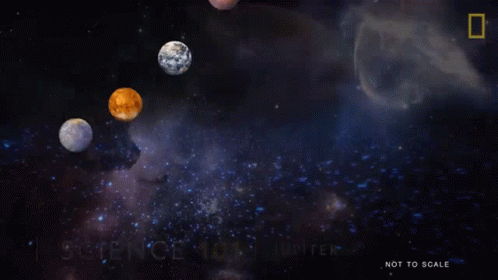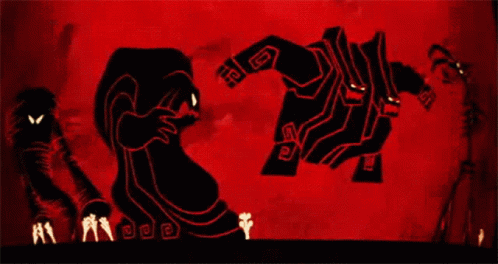Cosmic Choreography: When the Planets Line Up

Welcome back to another Wednesday edition of the Varrock Street Journal Community!
Today, we're exploring a celestial spectacle that has recently graced our night skies—a rare planetary alignment involving seven of our solar system's planets. Such alignments have fascinated humanity for centuries, prompting both awe and speculation. If you didn’t have a chance to see it yourself, don’t sweat it! Luckily, you can find videos and pictures online or right here through the articles referenced throughout this post. Let's delve into what this event entails, its frequency, observable effects, historical significance, and when we can expect similar occurrences in the future. starwalk.space+6apnews.com+6sciencealert.com+6astronimus.com+1answeroasis.com+1
What Is a Planetary Alignment?
A planetary alignment, often referred to as a "planetary parade," occurs when several planets appear to gather closely in a specific region of the sky from our viewpoint on Earth. This phenomenon is a visual effect resulting from the orbital positions of the planets around the Sun. It's important to note that while the planets seem aligned from our perspective, they remain vast distances apart in space. space.com+2starwalk.space+2starwalk.space+2

The Recent Alignment: February 28, 2025
On the evening of February 28, 2025, skywatchers were treated to a remarkable event where seven planets—Mercury, Venus, Mars, Jupiter, Saturn, Uranus, and Neptune—appeared simultaneously in the night sky. This rare alignment allowed observers to witness multiple planets in a single viewing session, with some visible to the naked eye and others requiring binoculars or telescopes. space.com+2sciencealert.com+2forbes.com+2apnews.com
Frequency of Such Alignments
Planetary alignments of this magnitude are relatively rare. While smaller alignments involving three or four planets occur more frequently, alignments featuring five or more planets are less common. The specific alignment witnessed in February 2025 is considered exceptional, with the next occurrence of a similar seven-planet alignment projected for 2036. forbes.com
Observable Changes During Alignments
For observers on Earth, planetary alignments offer a unique opportunity to view multiple planets clustered in a particular section of the sky. During the recent alignment, planets like Venus, Mars, and Jupiter were visible to the naked eye, appearing as bright, distinguishable points of light. Planets such as Uranus and Neptune, being fainter, required optical aids for observation. time.com+5starwalk.space+5starwalk.space+5
It's crucial to emphasize that these alignments, while visually captivating, do not exert any significant gravitational effects on Earth. The primary impact is the aesthetic pleasure and the opportunity for educational outreach in astronomy. livescience.com
Historical Significance and References
Throughout history, planetary alignments have been subjects of intrigue, often associated with myths, prophecies, and significant cultural events. Ancient civilizations meticulously recorded these occurrences, attributing various terrestrial events to celestial configurations. For instance, the Mayans and Egyptians aligned their architectural structures with celestial events, reflecting the importance they placed on planetary positions. toxigon.com
In more recent times, alignments have been linked to scientific advancements. The notable alignment in the late 1970s and early 1980s facilitated NASA's Voyager missions, enabling the spacecraft to utilize gravitational assists to explore the outer planets. astronimus.com

Past and Future Alignments
- Past Alignment: A significant planetary alignment occurred on May 5, 2000, involving the Sun, Moon, Mercury, Venus, Mars, Jupiter, and Saturn. This event garnered widespread attention due to its rarity and the various cultural interpretations associated with it. astrophotographylens.com
- Future Alignment: The next notable alignment is anticipated on March 15, 2080, when six planets—Venus, Mercury, Jupiter, Saturn, Mars, and Uranus—will be visible in the morning sky. Such events provide valuable opportunities for both amateur and professional astronomers to study planetary positions and movements. starwalk.space+1starwalk.space+1
Reflection Questions:
- Cultural Impact: How have planetary alignments influenced cultural or religious practices throughout history?
- Scientific Opportunities: What advancements in space exploration have been facilitated by planetary alignments?
- Public Engagement: How can events like planetary alignments be leveraged to promote interest in astronomy and science education?
Planetary alignments serve as reminders of the dynamic and interconnected nature of our solar system. They offer both scientific insights and moments of wonder, encouraging us to look up and contemplate the vastness of the cosmos.
Thank you for joining us on this celestial journey! Stay curious, and we look forward to exploring more wonders of the universe with you in our next edition.
— The Varrock Street Journal Team
